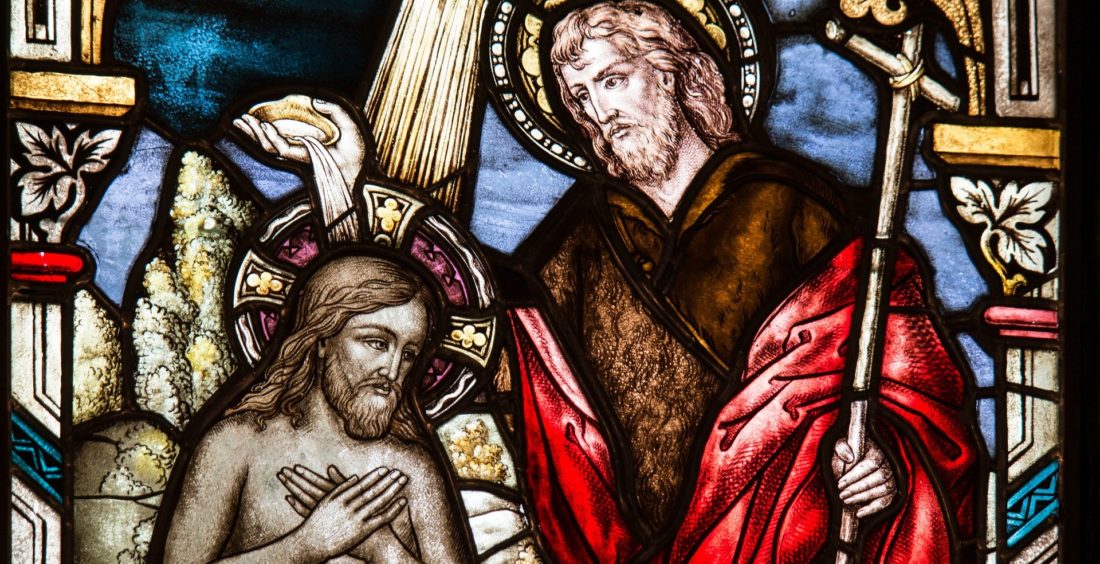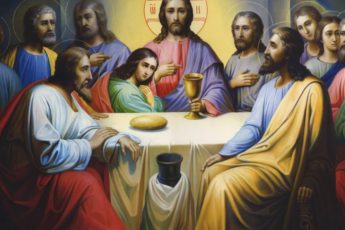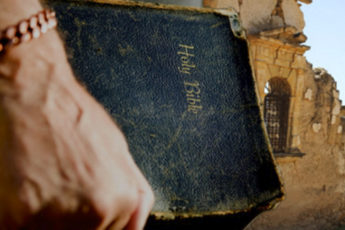Baptism
A Topic Misunderstood & One That Requires Greater Research
Baptism is a controversial topic directly connected to salvation. Those that argue for baptism being a prerequisite to salvation state that unless someone is baptized, they are not saved. Furthermore, proponents of this view also believe that the Holy Spirit is received by the believer through Chrismation which takes place immediately after baptism. While those that don’t believe in baptism as a prerequisite for salvation state that baptism is simply an outward expression of salvation; it’s the New Covenant sign, as circumcision was in the Old Testament. Moreover, proponents of this view state that salvation is achieved through accepting Jesus as Lord and Savior.
To properly understand baptism, it’s essential to understand the history of baptism. The act of baptism in the New Testament was first revealed in Matthew 3:5-6. This was prior to Jesus’ commandment in Matthew 28:16-20, and it was done by John the Baptist for the preparation of the coming of the Messiah:
Matthew 3:5-6
5 People went out to him from Jerusalem and all Judea and the whole region of the Jordan. 6 Confessing their sins, they were baptized by him in the Jordan River.
This is the first example in the New Testament; however baptism has its roots in the Old Testament. In Hebrew the word baptism is Tevilah, and it is a Jewish ritual which is implemented for converts into Judaism. The convert is immersed in “living water” – a natural stream or a mikveh. The act is intended to purify and to restore the person spiritually. Once the person undergoes the Tevilah, they are converted to Judaism and is allowed to participate in Jewish religious life. Furthermore, a mikveh is a specially constructed ritual bath, connected directly to a natural source of water, such as a spring. In the case of John the Baptist, he baptized in a river. [1] [2] According to Wikipedia, the author of History of baptism has the following to say about Tevilah: “Immersion in the mikvah represents a change in status in regards to purification, restoration, and qualification for full religious participation in the life of the community, ensuring that the cleansed person will not impose uncleanness on property or its owners.” [3] In other sources, the conversion process to Judaism wasn’t a simple statement or acceptance of faith; rather it was a process by which the convert would be justified through certain acts followed by the Tevilah in order to accept the faith.
On conversion: http://www.heartofisrael.net/teachings/rabbi/mikveh.htm
“Once a person has decided to convert, the proselyte must begin to learn Jewish religion, law and customs and begin to observe them. This teaching process generally takes at least one year, because the prospective convert must experience each of the Jewish holidays; however, the actual amount of study required will vary from person to person (a convert who was raised as a Jew might not need any further education, for example, while another person might need several years).
After the teaching is complete, the proselyte is brought before a Beit Din (rabbinical court) which examines the proselyte and determines whether he or she is ready to become a Jew. If the proselyte passes this oral examination, the rituals of conversion are performed. If the convert is male, he is circumcised (or, if he was already circumcised, a pinprick of blood is drawn for a symbolic circumcision). Both male and female converts are immersed in the mikveh (a ritual bath used for spiritual purification). The convert is given a Jewish name and is then introduced into the Jewish community”.
The Orthodox and Catholic churches believe that baptism is required for the remission of the Original Sin. Salvation is received through baptism and Chrismation is the ritual performed to receive the Holy Spirit. Like Tevilah, once the person is baptized in the Catholic and Orthodox churches, they can then fully participate in church spiritual activities. Participating in and accepting a sacrament is one particular example which is not open to non-baptized individuals. In the case of John the Baptist, the act of baptism focuses on repentance and a symbolic act of restoration/purification to prepare the Jews for the Messiah that was to come. The difference between the pre/post ascension of Christ according to Orthodox and Catholics is that in the pre-ascension, people were baptized in a mental conversion – a reset. As for the post-ascension baptism it is an actual cleansing of sin called the sanctifying grace/the grace of justification (according to the Catholic Church). Essentially, the Lord’s Grace is bestowed upon the individual who is baptized, cleansing all sin – original sin and personal.
This position is further justified with verses as follows:
John 3:5, 5 Jesus answered, “Very truly I tell you, no one can enter the kingdom of God unless they are born of water and the Spirit.
Acts 2:38, 38 Peter replied, “Repent and be baptized, every one of you, in the name of Jesus Christ for the forgiveness of your sins. And you will receive the gift of the Holy Spirit.
There is an opposing view to the Orthodox/Catholic view on baptism which is held by Protestant churches. Their view suggests that salvation does not occur at baptism; rather salvation occurs by faith and at time of repentance/acceptance of Jesus as Lord and Savior. For example Romans 10:9 9 If you declare with your mouth, “Jesus is Lord,” and believe in your heart that God raised him from the dead, you will be saved. Next, we have Ephesians 2:8-9 which states 8 For it is by grace you have been saved, through faith—and this is not from yourselves, it is the gift of God— 9 not by works, so that no one can boast. The entire Book of Romans speaks about salvation through faith, using Abraham as an example referencing that he had faith therefore he was righteous (Romans 4:3 3 What does Scripture say? “Abraham believed God, and it was credited to him as righteousness”). Furthermore, in Romans 4: 9-11 Paul the Apostle states:
9 Is this blessedness only for the circumcised, or also for the uncircumcised? We have been saying that Abraham’s faith was credited to him as righteousness. 10 Under what circumstances was it credited? Was it after he was circumcised, or before? It was not after, but before! 11 And he received circumcision as a sign, a seal of the righteousness that he had by faith while he was still uncircumcised.
Per this verse, a parallel is draw and an argument is presented stating that salvation is achieved through faith not through the act of baptism. Furthermore, it is understood that circumcision was a sign of the covenant which is the parallel to baptism. In another example, Protestants point to the thief on the cross being saved without baptism. In Luke 23:39-43 the following is stated:
39 One of the criminals who hung there hurled insults at him: “Aren’t you the Messiah? Save yourself and us!” 40 But the other criminal rebuked him. “Don’t you fear God,” he said, “since you are under the same sentence? 41 We are punished justly, for we are getting what our deeds deserve. But this man has done nothing wrong.” 42 Then he said, “Jesus, remember me when you come into your kingdom.” 43 Jesus answered him, “Truly I tell you, today you will be with me in paradise.”
Additionally, Protestants argue that the Orthodox and Catholic definition of baptism, stresses that an act must be conducted for salvation – which is works. According to this understanding it’s not faith alone which grants you salvation and acceptance into the family of God. The premise of Christianity is that salvation is by Grace not by works. No one is eligible or capable of meeting God’s standard of perfection, therefore all are sinful. Christ’s blood which was shed on the cross is sufficient and it’s through His Grace that we are saved which is faith in Him. According to this view, there is no additional step required other than accepting Christ (Romans 10:9).
Romans 3:21-25
21 But now apart from the law the righteousness of God has been made known, to which the Law and the Prophets testify. 22 This righteousness is given through faith in[h] Jesus Christ to all who believe. There is no difference between Jew and Gentile, 23 for all have sinned and fall short of the glory of God, 24 and all are justified freely by his grace through the redemption that came by Christ Jesus. 25 God presented Christ as a sacrifice of atonement,[i] through the shedding of his blood—to be received by faith.
In another example from the Old Testament, God the Father speaks about the necessity of a circumcision of the heart as a prerequisite, not simply the outward circumcision (Deuteronomy 10:16, 30:6, Jeremiah 4:4, 9:25 & 26, Ezekiel 47:7 & 9). Why is this important? These verses speak about the circumcision as an act that represents the cutting away of sin into a change of heart. Basically, the Lord seeks that His people accept Him and turn to Him, then with the external sign show the covenant between God and His people. Thus, salvation is attained through faith in Jesus, while the act of baptism is an outward expression, understood as the Covenant of Grace. Essentially, baptism is that act that imitates the putting to death of the old self and the resurrection of the new life in Christ.
Colossians 2:9-15
9 For in Christ all the fullness of the Deity lives in bodily form, 10 and in Christ you have been brought to fullness. He is the head over every power and authority. 11 In him you were also circumcised with a circumcision not performed by human hands. Your whole self ruled by the flesh[b] was put off when you were circumcised by[c] Christ, 12 having been buried with him in baptism, in which you were also raised with him through your faith in the working of God, who raised him from the dead. 13 When you were dead in your sins and in the uncircumcision of your flesh, God made you[d] alive with Christ. He forgave us all our sins, 14 having canceled the charge of our legal indebtedness, which stood against us and condemned us; he has taken it away, nailing it to the cross. 15 And having disarmed the powers and authorities, he made a public spectacle of them, triumphing over them by the cross.
Romans 6:3-7
3 Or don’t you know that all of us who were baptized into Christ Jesus were baptized into his death? 4 We were therefore buried with him through baptism into death in order that, just as Christ was raised from the dead through the glory of the Father, we too may live a new life. 5 For if we have been united with him in a death like his, we will certainly also be united with him in a resurrection like his. 6 For we know that our old self was crucified with him so that the body ruled by sin might be done away with,[a] that we should no longer be slaves to sin— 7 because anyone who has died has been set free from sin.
1 Corinthians 15:1-4
Now, brothers and sisters, I want to remind you of the gospel I preached to you, which you received and on which you have taken your stand. 2 By this gospel you are saved, if you hold firmly to the word I preached to you. Otherwise, you have believed in vain. 3 For what I received I passed on to you as of first importance[a]: that Christ died for our sins according to the Scriptures, 4 that he was buried, that he was raised on the third day according to the Scriptures.
Paul’s view validates the position held by Protestants which his connected with Romans 10:9.
Lastly, regarding the view on accepting the Holy Spirit, the two primary groups of churches differ on this as well. According to the Catholic and Orthodox churches, the Holy Spirit is attained after baptism when Chrismation is done. Chrismation is a process of applying a liquid called myron to seven parts of the body. This is an anointment conducted which is the seal of the gift of the Holy Spirit. Protestant churches on the other hand don’t accept Chrismation. They state that the Holy Spirit is attained immediately after accepting Jesus as Lord and Savior. One verse that is used to validate this view is Acts 10:44-46:
44 While Peter was still speaking these words, the Holy Spirit came on all who heard the message. 45 The circumcised believers who had come with Peter were astonished that the gift of the Holy Spirit had been poured out even on Gentiles. 46 For they heard them speaking in tongues[a] and praising God. Then Peter said, 47 “Surely no one can stand in the way of their being baptized with water. They have received the Holy Spirit just as we have.” 48 So he ordered that they be baptized in the name of Jesus Christ. Then they asked Peter to stay with them for a few days.
In this verse, Chrismation was not conducted to attain the Holy Spirit. Therefore, Protestants don’t regard this as Biblical. Thus, we must spend time to study the Bible and the early church to determine where certain changes took place and how views changed on baptism, salvation and other theological topics. Based on the premise of Salvation through Christ and understanding of salvation through Grace, not works, baptism as a sign of the New Covenant is therefore valid. One must first accept Jesus as Lord, His virgin birth, life and mission, suffering on the cross, crucifixion, resurrection and His second coming. Moreover, we must accept the Holy Trinity (God the Father, God the Son, God the Holy Spirit) and understand that we are sinners. Due to the Original Sin, we have been condemned to eternal damnation, and without the sacrifice of our Lord Jesus, we would not inherit eternal life. Salvation through Christ and acceptance of Jesus as Lord and Savior is how salvation is attained.







Leave a Comment